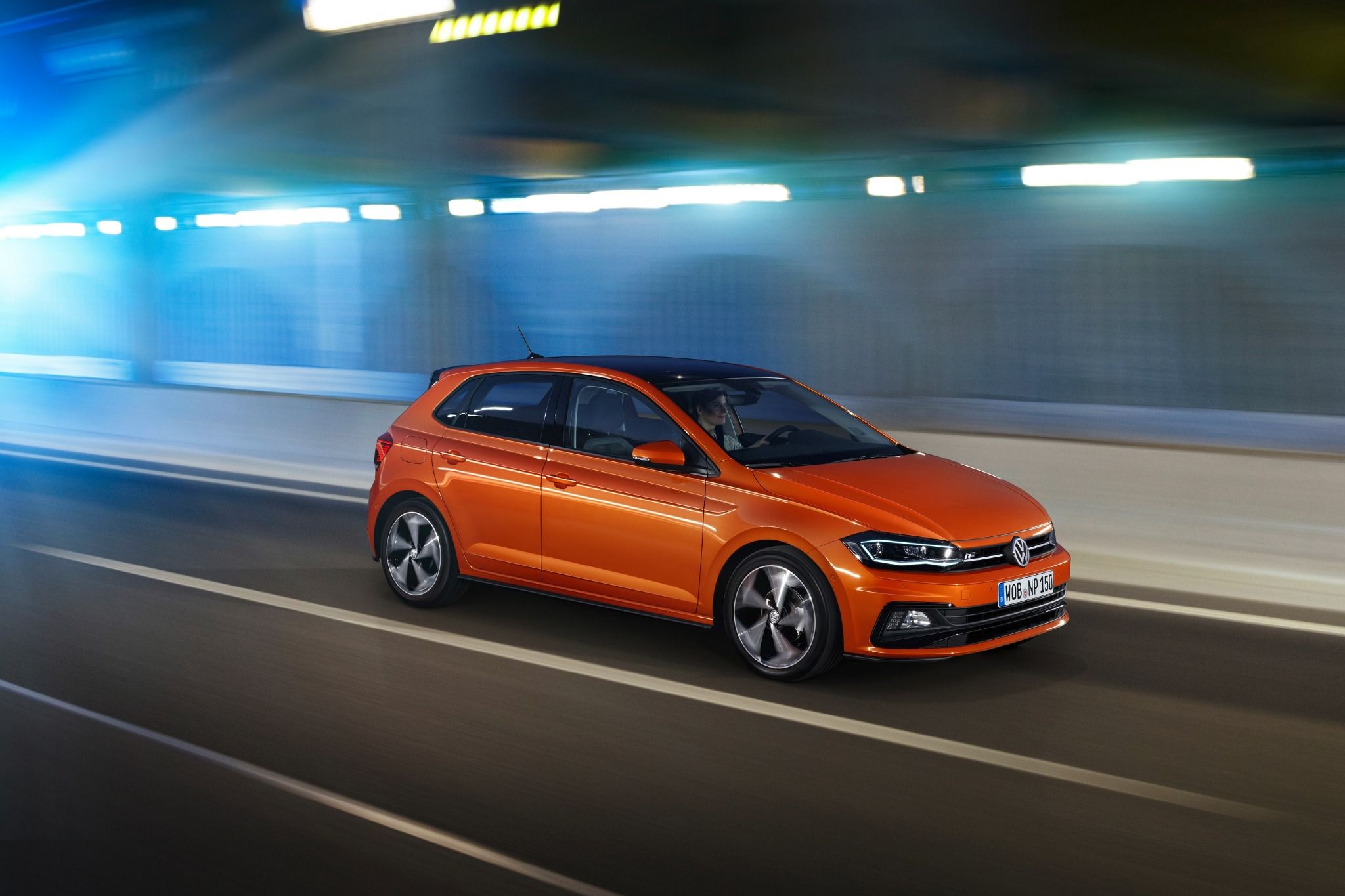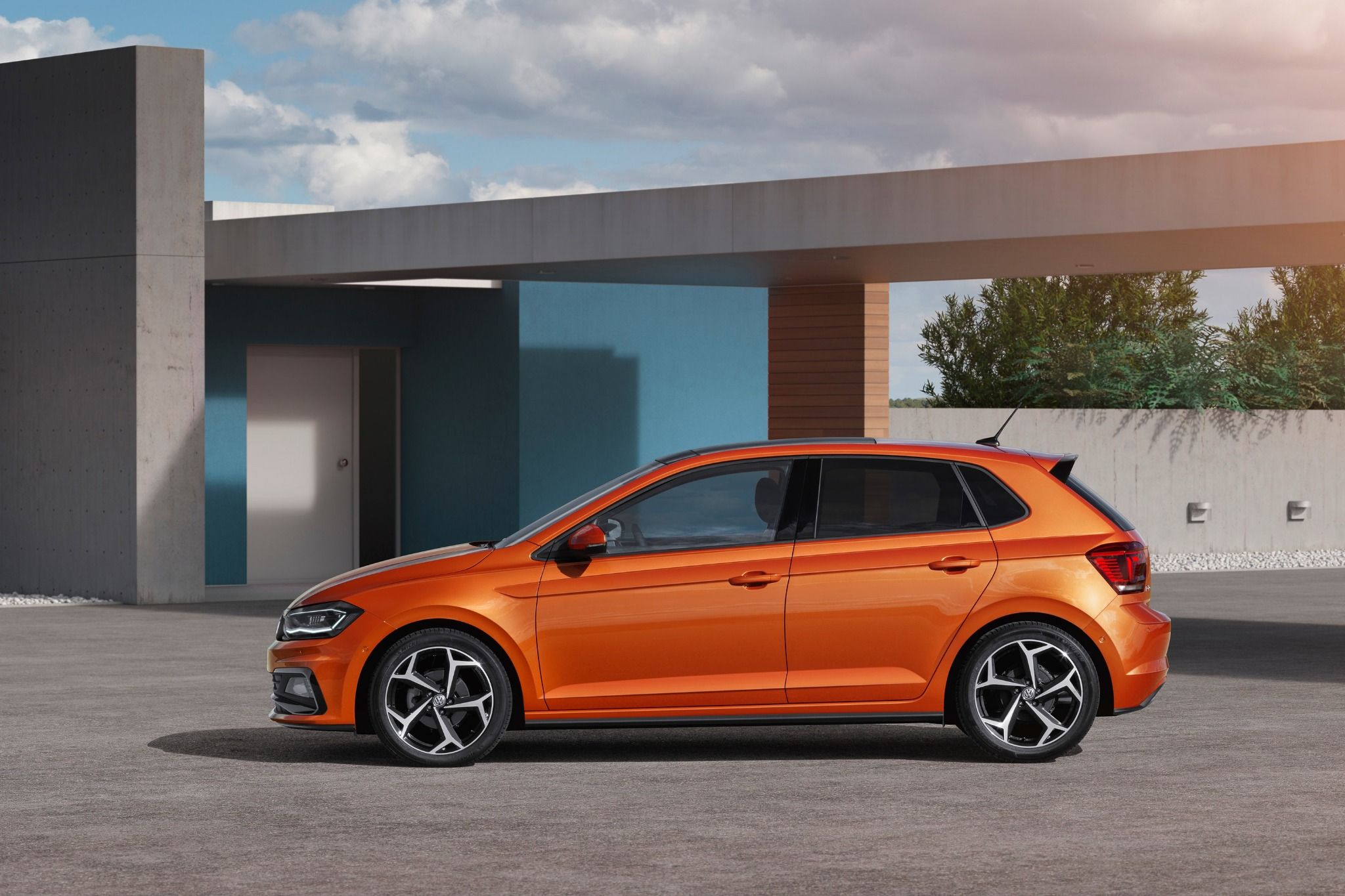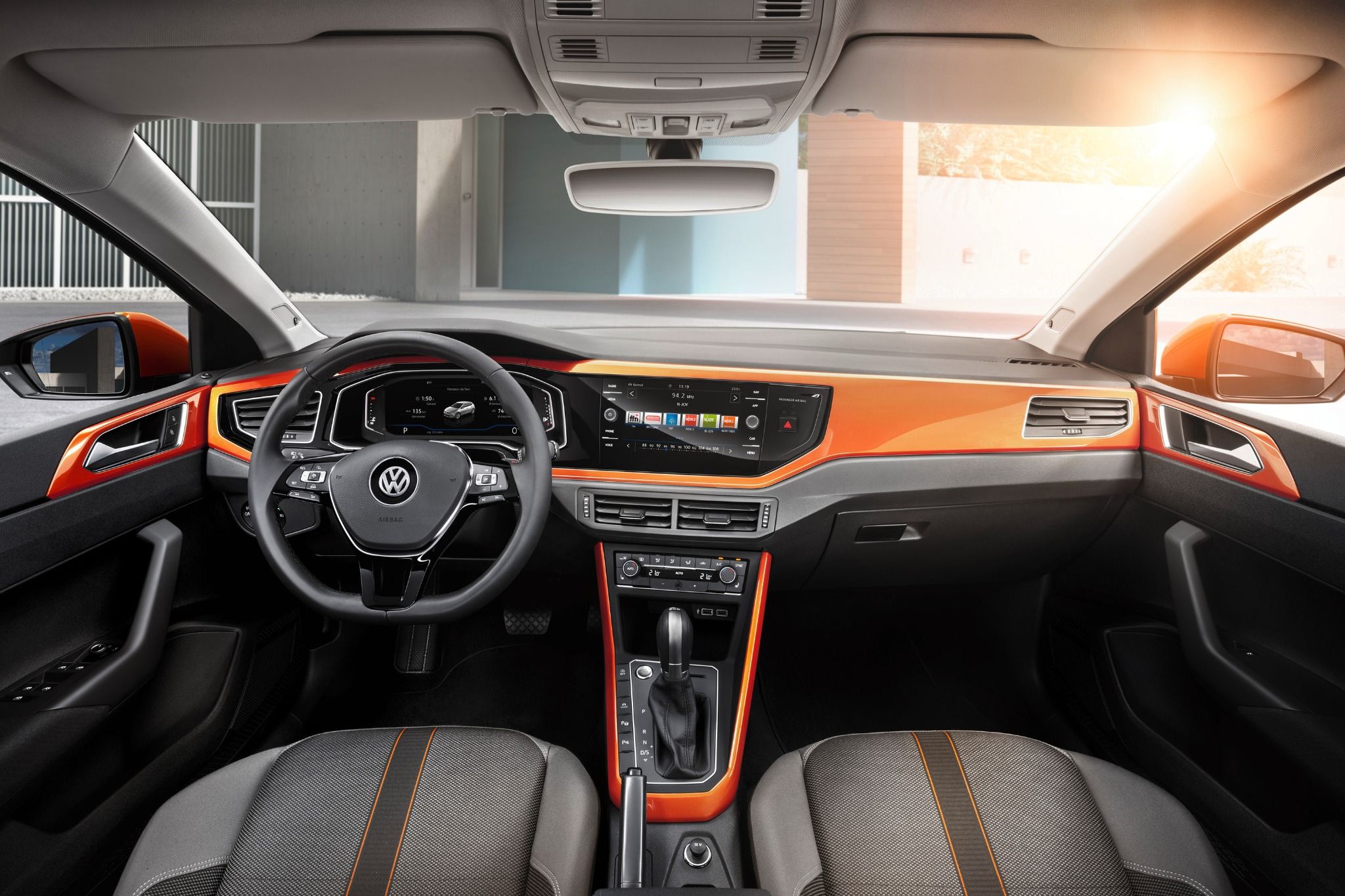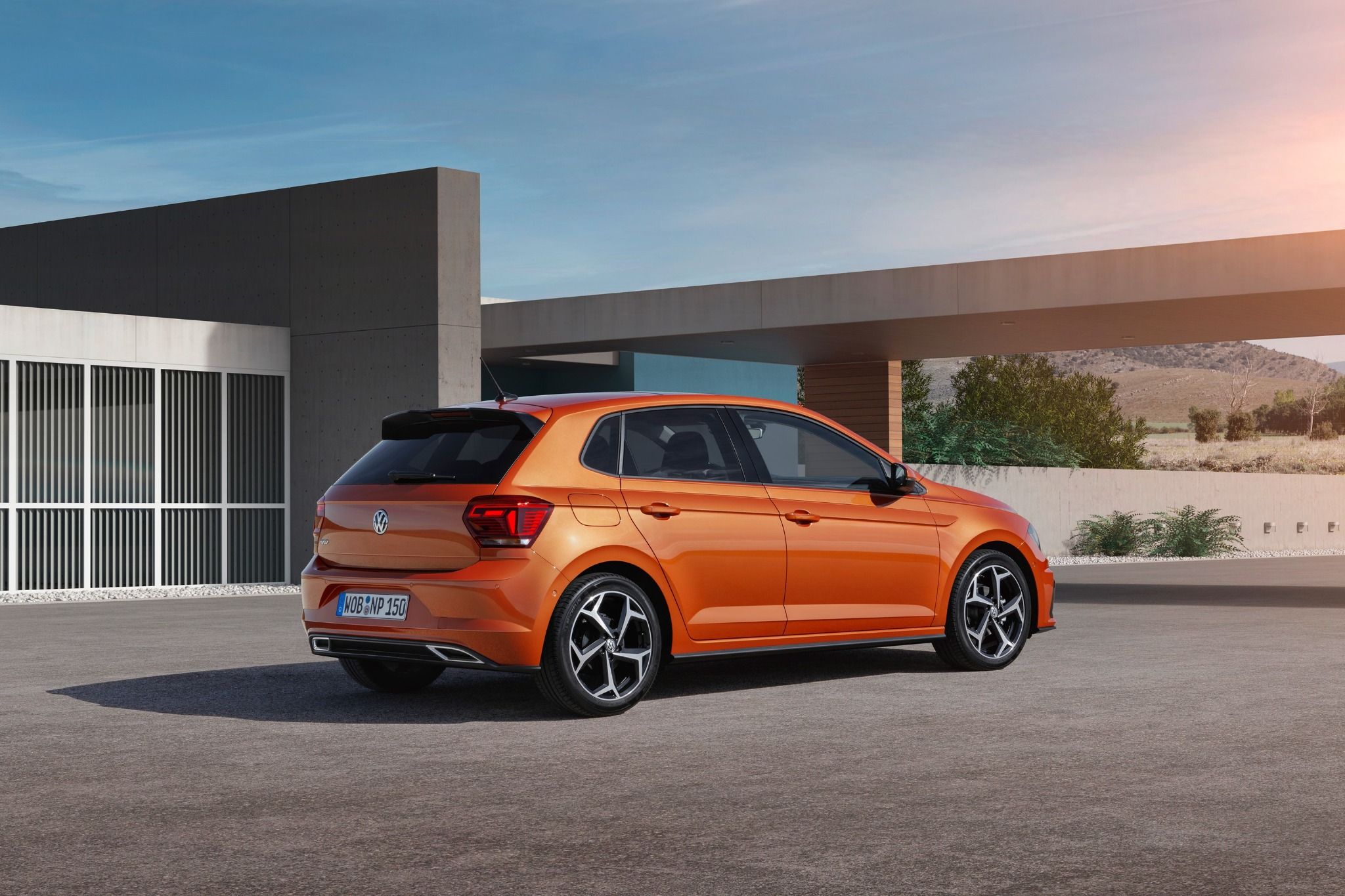What is it?
Volkswagen’s Polo GTI sits at the top of the range of the manufacturer’s second-smallest hatchback range, bringing with it plenty of performance and a good degree of charm, too.
But what if you want the looks of the GTI, but not the hike in insurance costs or increased trips to the fuel pump. Enter this – the Polo R-Line. It’s got the stylish appearance of the performance Polo, but underneath the bonnet resides a turbocharged 1.0-litre engine in place of the GTI’s 2.0-litre four-cylinder. Could it be the best of both worlds? We’ve been to find out.


What’s new?
Underpinning this latest generation Polo is Volkswagen Group’s latest MQB platform, which allows it to offer far more space than its proportions would lead you to believe. It’s no small car anymore, however; anyone used to previous generation Polos would likely be surprised by just how much the little Volkswagen has grown.
But that means that it feels like a far bigger, and therefore a more refined car to drive. But of course, all this progression does come at a price. You may need a sit down, but this is a £25,000 Polo – quite the sum for what is still meant to be a relatively ‘entry-level’ hatchback.
What’s under the bonnet?
As mentioned, this particular Polo uses a 1.0-litre turbocharged three-cylinder engine with 113bhp and 230Nm of torque. It’s good for a 0-60mph time of 9.3 seconds, and flat-out it’ll hit 124mph. Power is sent, in our test car’s case, through a seven-speed DSG automatic to the front wheels.
Given its small capacity, the good economy figures are unsurprising; Volkswagen claims 57.6mpg combined, while emissions are set at 110g/km CO2.
It’s a refined unit, and one which suits the overall character of the car. Insurance-wise, it falls into group 12, putting it at the lower end of the spectrum. It should mean that premiums won’t be sky-high for this particular Polo – the standard Polo GTI is a group 26 car, in contrast.
What’s it like to drive?
The overreaching feeling with the Polo is simply how refined it is to drive. Much like the Audi A1, the Polo feels just as at home travelling at motorway speeds as it does darting about town. There’s a fair amount of road noise, but a quiet engine and predictable steering combine to make it a relatively relaxing long-distance cruiser, capable of swallowing up miles as effortlessly as cars twice its size. Want a quieter ride? We’d opt for smaller wheels.
But that isn’t to say it isn’t fun when things get twisty. Decent body control matched with a peppy engine make corners enjoyable, and there’s a good amount of grip to be found too. The DSG gearbox can be a little dim-witted when mooching about (sometimes taking an age to react from a dead stop), but it’s happier when up and running – and you can take control of the ‘box via the steering wheel-mounted paddles should you want to, as well.
How does it look?
The Polo’s design represents a decent evolution of the previous generation’s looks while pumping up its premium credentials. It’s a svelte appearance, and in R-Line specification it’s certainly a sportier one. Could it be a little more interesting? Perhaps. But the Polo has always managed to look pretty good without being overly dull, and we’d argue this is the same for the latest model.
The optional 17-inch alloy wheels on our test car look the part too, and the overall impression is of a ‘baby’ GTI – albeit without the trademark red highlights.


What’s it like inside?
Volkswagen has pushed hard to elevate the overall impression of quality inside the cabin of the Polo, and that effort has really paid dividends. It’s a high-end place to be, with all manner of solid-to-the-touch plastics meeting contrast finisher pieces to create a cabin which feels really well made – but then we do have to remember that this is a £25,000 Polo, and if the cabin wasn’t tip-top, then that price would appear even more over the top than it already is.
It’s a good place to be practicality-wise, too. Rear seat legroom is decent enough, and there’s plenty of headroom to be found as well. When it comes to boot space, the Polo does even better thanks to its 351-litre load area – that’s bigger, even, than the larger Ford Focus.
What’s the spec like?
The standard equipment levels on the R-Line are strong; again, something we’d expect given its price. The R-Line spec also boasts all manner of visual enhancements too, including a full design pack, gloss black air intakes and LED daytime running lights. Our test car also got optional 17-inch alloy wheels (£450), as well as full LED headlights to complement the daytime running units – these came in at £850.
The main infotainment system is Volkswagen’s composition media one – it’s easily one of the most user-friendly in the business. As well as satellite navigation and media functions, it houses Apple CarPlay and Android Auto, both of which work seamlessly on the 8.0-inch touchscreen-controlled system.
Verdict
The R-Line specification is there for those who want all of the buttons, screens and additional equipment you could want from a Polo. It’s well built, good to drive and practical to boot – but then so is the regular car, and that feels a touch more refined on the motorway as a result of its smaller wheels.
